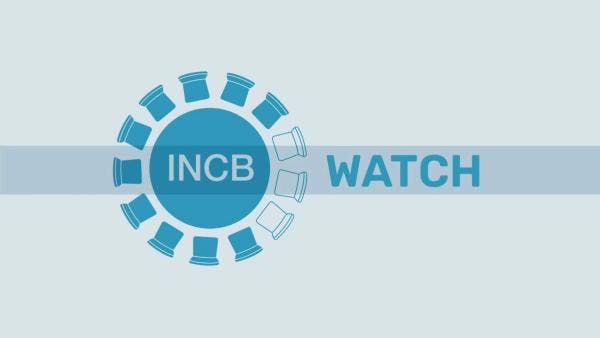The INCB and the scheduling of precursors at CND 2017
At the 60th CND in March 2017, there were a number of substances placed under international control (‘scheduled’). The majority of these were recommended by the WHO’s Expert Committee on Drug Dependence.
However, under the United Nations Convention against Illicit Traffic in Narcotic Drugs and Psychotropic Substances, the mandate for assessing chemicals used in the illicit manufacture of drugs – precursors – lies with the INCB. The Board recommends to the CND, which makes the final decision. Scheduling issues were dealt with on the Thursday morning session under agenda item 8b, ‘Changes in the scope of control’. INCB President Mr Werner Sipp presented data and recommendations on two such precursor chemicals: ANPP and NPP. The Board recommended that these substances should be included in Table 1 of the 1988 Convention, imposing upon them international controls. The CND went on to vote unanimously in favour of scheduling ANPP and NPP.
In the course of his remarks at CND, Mr Sipp stated that the scheduling of fentanyl precursors demonstrates that the international conventions protect public health. He argued that their inclusion in Table 1 of the 1988 Convention would not interfere in their availability for licit purposes, which consist primarily in the production of fentanyl for medical purposes.
UNODC’s Global SMART Update, which focuses on synthetic drugs – Amphetamine Type Stimulants and New Psychoactive Substances – recently published on fentanyl and its analogues. Fentanyl is approximately 100 times the potency of morphine, and is linked to an expansion in fatalities associated with overdose, particularly in North America. Fentanyl itself is controlled under Schedule l of the 1961 Single Convention. As the SMART Update notes, fentanyl is ‘often sold under the guise of heroin or prescription medicines, such as oxycodone, and this exacerbates the risk of overdose and associated fatalities’. This context, in which substances are bought and sold on an illicit market, is one that Mr Sipp fails to take into account. In a legally regulated market, consumers would know what they are buying, whereas at present they may believe that they are purchasing (for example) heroin, when in fact they may be sourcing the fentanyl analogue carfentanil, a drug with 10,000 times the strength of morphine.
Keep up-to-date with drug policy developments by subscribing to the IDPC Monthly Alert.
Topics
Regions
Related Profiles
- International Narcotics Control Board (INCB)
